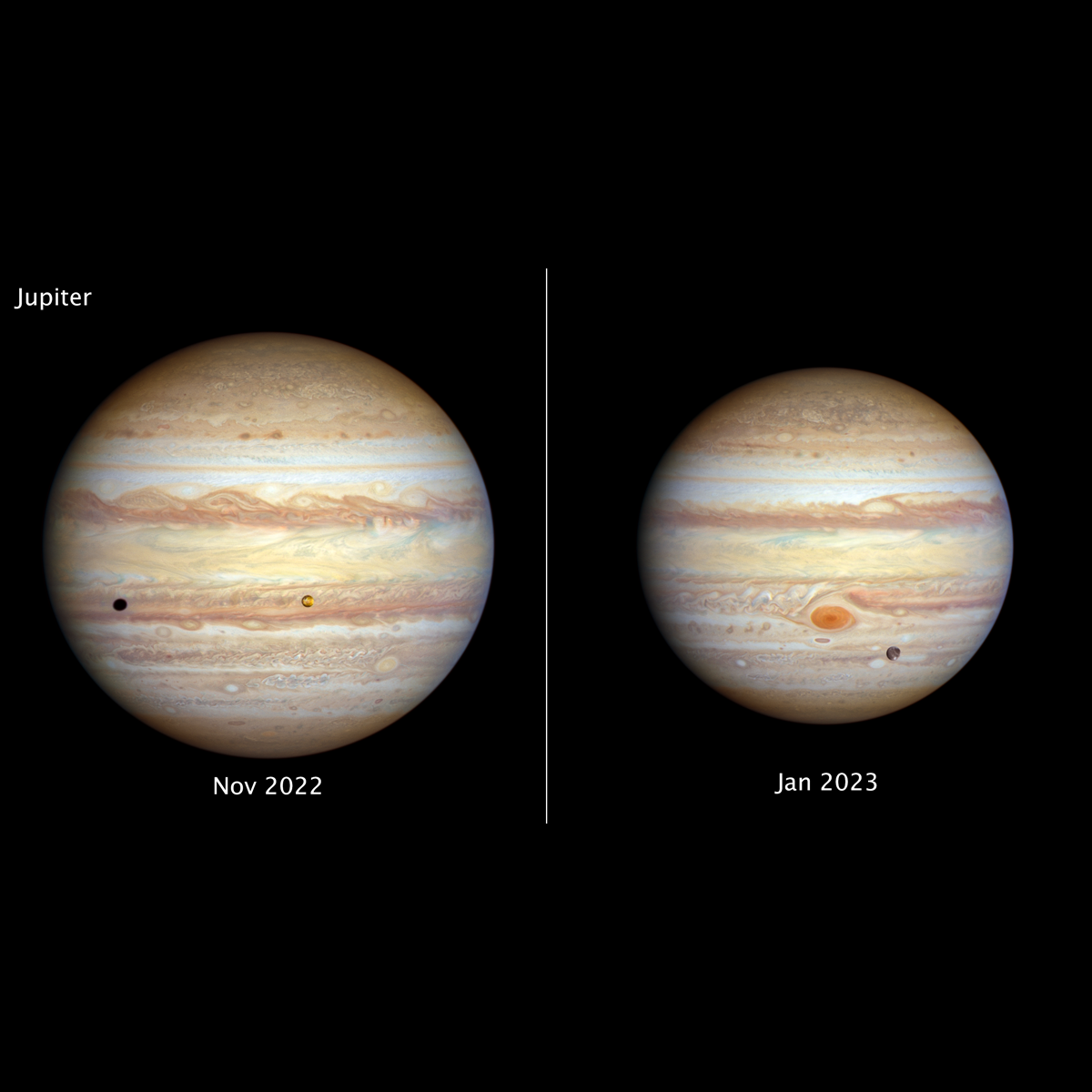
Summary
Forecast for Blustery Winds, Smoggy Hazes
The outer planets beyond Mars do not have solid surfaces to affect weather as on Earth. And, sunlight is much less able to drive atmospheric circulation. Nevertheless, these are ever-changing worlds. And Hubble – as interplanetary meteorologist – is keeping track, as it does every year. Jupiter’s weather is driven from inside-out as more heat percolates up from its interior than it receives from the Sun. This heat indirectly drives color change cycles highlighting a system of alternating cyclones and anticyclones. Uranus has seasons that pass by at a snail’s pace because it takes 84 years to complete one orbit about the Sun. The seasons are extreme because Uranus is tipped on its side. As summer approaches in the northern hemisphere, Hubble sees a growing polar cap of high-altitude photochemical haze that looks similar to the smog over cities on Earth.

